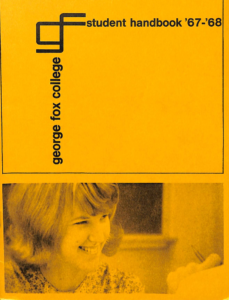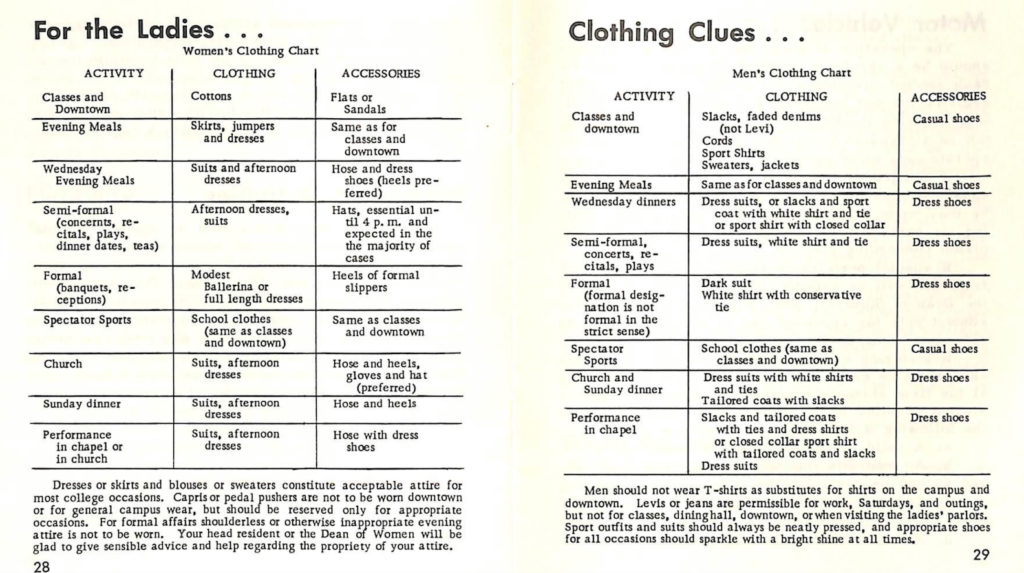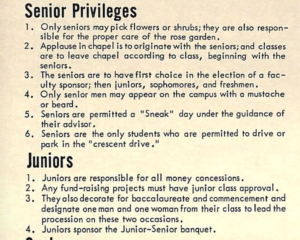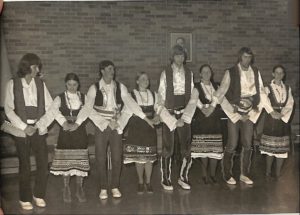 From the earliest days of the college, students had to agree to uphold the lifestyle contract and the rules and regulations found in the Student Handbook. These have changed significantly over the years.
From the earliest days of the college, students had to agree to uphold the lifestyle contract and the rules and regulations found in the Student Handbook. These have changed significantly over the years.
Curfews
By 1971, Freshmen men were required to be in their rooms from 12am-6:30am Monday through Thursday and 1am-6:30am Friday through Sunday. As long as grades were maintained and there were no behavioral problems, the men could petition to have these waived. There were no curfews for upperclass men in good standing.
Women, on the other hand, were required to be in their rooms from 11pm-6:30 Monday through Thursday and 12am-6:30am Friday through Sunday. This applied to all women’s housing, including off-campus housing, and could not be waived.
By the 1980s, only First-year students had a curfew. This was finally dropped in 1990.
Dress codes
Quite specific dress codes were mandated by George Fox until the 1970s. This applied both to on and off campus situations. In the fall of 1970, the dress code was simplified to require “appropriate clothing.” However, the rules continued to specify that students could wear “grubbies” only on Saturdays.

Visiting Hours
From the foundation of the school, students were not allowed into the dorm rooms and bedrooms of those of the opposite sex. These rules applied both to on-campus and off-campus housing. For students living at home, only family members of the opposite sex were allowed in their rooms.
Visiting hours were instituted in the autumn of 1991. In the residence halls, opposite sex visitors were allowed between 7pm-10pm Sunday to Thursday. In the suites and houses used by the upperclassmen, days and hours varied. In all cases, dorm and bedroom doors had to remain open.
Class Privileges

Traditionally, the seniors had privileges that other students did not. As can been seen in the 1966 Students Handbook, they began the applause in chapel, could cut flowers on campus, and had the best parking spots. Senior men also were the only male students allowed to have mustaches or beards. Each of the other classes had responsibilities from the juniors who approved fundraising projects to the sophomores who had to organizing the annual campus cleaning day.
Dancing

When the college was first founded in 1891, dancing was strictly prohibited, and students could not attend “dancing parties.” Dancing demonstrations or choreography in plays was allowed. This remained the policy until 1991 when ethnic and square dancing were approved. Due to this, square dancing became a very popular on-campus activity, prompting a traditional Hoe-down during the weekend before school started. Then in 1996, social dancing became acceptable as long as it was at an ASC-sponsored dance . At these, the play list had to be approved and there were faculty chaperones. Students were still discouraged from visiting dance clubs.
Movies
Prior to 1995 students were prohibited from watching rated R movies, privately or publicly, unless they were given permission by a professor for academic reasons. As VCRs and other devices became more affordable, the university had to respond to the fact that students might watch movies in the dorms or houses. Thus in 2000, the administration released a list of accepted rated R movies that was updated each year. However, in 2004, the college decided to simply add a discernment clause in the lifestyle agreement, which instructed students to think critically about their media use, and to utilize only movies, music and video games that correspond to Christian merits and values. Any media or use of media that violated other parts of the lifestyle agreement were still prohibited.